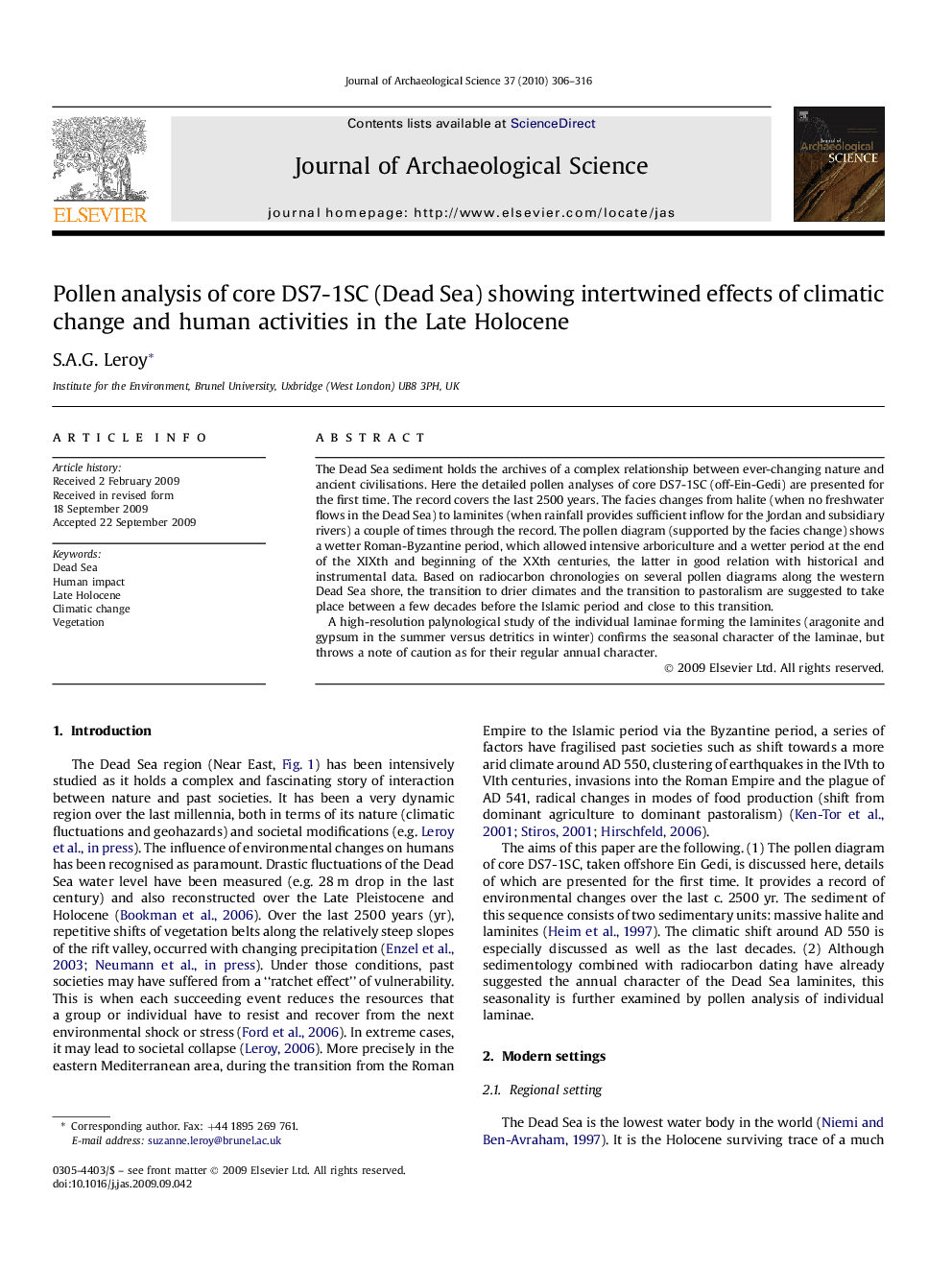| Article ID | Journal | Published Year | Pages | File Type |
|---|---|---|---|---|
| 1036561 | Journal of Archaeological Science | 2010 | 11 Pages |
The Dead Sea sediment holds the archives of a complex relationship between ever-changing nature and ancient civilisations. Here the detailed pollen analyses of core DS7-1SC (off-Ein-Gedi) are presented for the first time. The record covers the last 2500 years. The facies changes from halite (when no freshwater flows in the Dead Sea) to laminites (when rainfall provides sufficient inflow for the Jordan and subsidiary rivers) a couple of times through the record. The pollen diagram (supported by the facies change) shows a wetter Roman-Byzantine period, which allowed intensive arboriculture and a wetter period at the end of the XIXth and beginning of the XXth centuries, the latter in good relation with historical and instrumental data. Based on radiocarbon chronologies on several pollen diagrams along the western Dead Sea shore, the transition to drier climates and the transition to pastoralism are suggested to take place between a few decades before the Islamic period and close to this transition.A high-resolution palynological study of the individual laminae forming the laminites (aragonite and gypsum in the summer versus detritics in winter) confirms the seasonal character of the laminae, but throws a note of caution as for their regular annual character.
